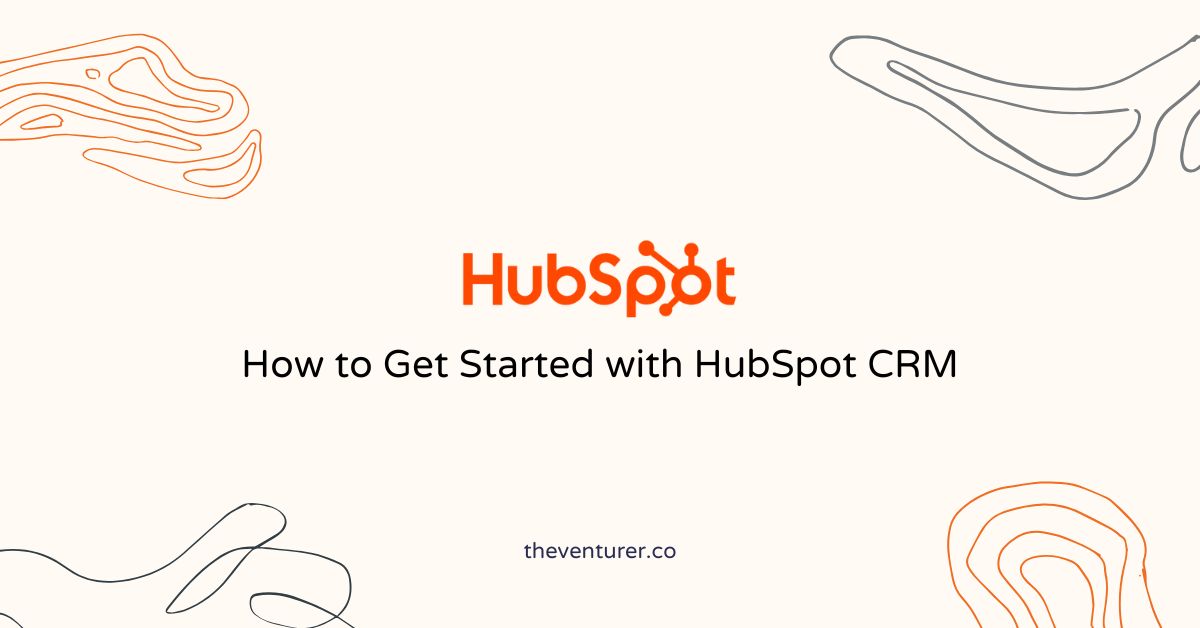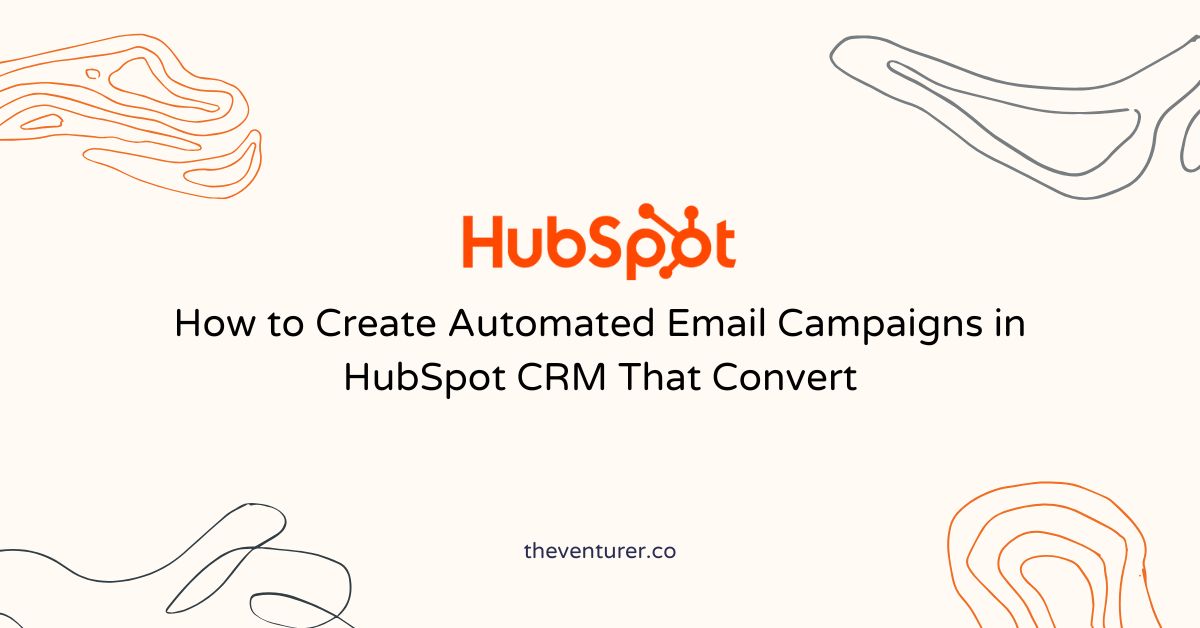Running an e-commerce business today takes more than great products and ads. Driving quality traffic is challenging enough, but the real test comes after — turning that attention into lasting customer relationships.
That’s where HubSpot CRM comes in. It helps online stores centralize customer data, automate re-engagement, and deliver personalized experiences that encourage repeat purchases.
Quick Answer:
HubSpot CRM helps e-commerce brands capture leads, automate marketing, and build long-term customer relationships through personalized, data-driven workflows.
Why HubSpot CRM Fits E-Commerce Businesses
Most online stores rely on separate systems for emails, ads, and analytics — creating fragmented data and inconsistent customer communication. HubSpot CRM connects all of that in one place, helping brands understand and serve their customers more effectively.
Unified Customer Profiles
Every contact record in HubSpot CRM includes purchase history, browsing activity, and communication logs. Instead of guessing what your customers want, you can personalize campaigns based on their real behavior.
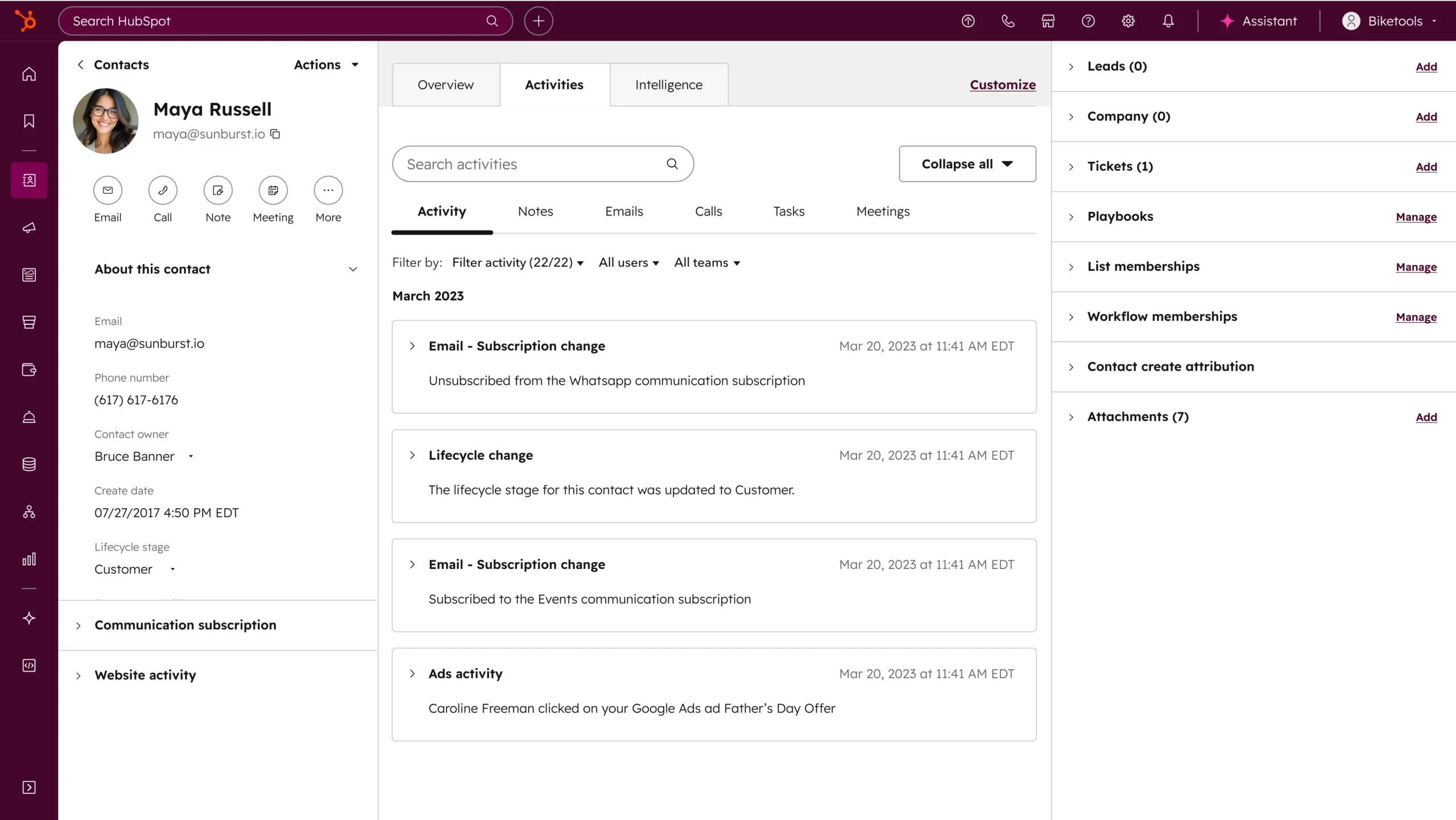
For example, if a customer buys a supplement every 30 days, HubSpot can automatically schedule a reorder reminder right before they run out.
Automation Without Complexity
HubSpot CRM’s visual workflow builder makes it easy to automate tasks that used to require manual effort. If a customer abandons their cart or visits a specific product page twice, HubSpot can trigger a tailored email sequence — no coding needed.
Insights That Drive Retention
HubSpot’s dashboards track lifetime value, repeat order rates, and campaign ROI. You can quickly see which channels bring loyal buyers and which marketing efforts deserve more budget.
💡 Example:
CODE41, a Swiss e-commerce watch brand, increased leads by 279%, e-commerce sales by 257%, and overall revenue by 223% after adopting HubSpot to automate marketing and manage customer relationships. (HubSpot Case Study)
Turning Visitors into Customers with HubSpot CRM
Attracting visitors is only part of the challenge — converting them into paying customers is where growth happens. HubSpot CRM connects your marketing tools, e-commerce platform, and customer communications to streamline that process.
Capture and Qualify Leads
HubSpot forms, pop-ups, and landing pages integrate directly with your store. When a shopper signs up for a discount or restock alert, their information is automatically added to the CRM — complete with tags for behavior, referral source, or product interest.
Recover Abandoned Carts
Cart abandonment is one of e-commerce’s biggest missed opportunities. HubSpot CRM can automate personalized follow-up emails, starting with a reminder one hour after abandonment, followed by a discount or product recommendation the next day.
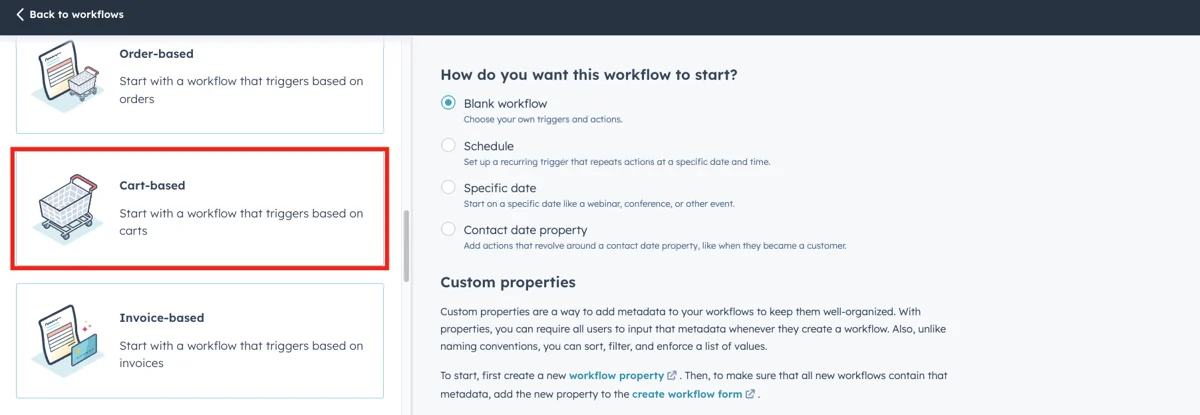
For Shopify and WooCommerce users, HubSpot can include dynamic product details and images in abandoned cart or follow-up emails for a more personal touch. This functionality is available to Marketing Professional and higher plan users through data sync or HubSpot’s Cart API.
Track Conversions and Revenue
HubSpot integrates with major store platforms like Shopify, WooCommerce, and Magento. That means every sale and campaign is tracked within the CRM, helping you see exactly which marketing efforts generate revenue.
💡 Example:
Brauer, an Australian health brand, grew its database by 325% and increased email click-through rates by 175% after implementing HubSpot’s automation and segmentation tools to drive repeat purchases. (HubSpot Case Study)
Building Loyalty Through Automation
In e-commerce, retaining a customer is far more profitable than acquiring a new one. HubSpot CRM helps businesses nurture relationships automatically — without losing authenticity.
Personalized Post-Purchase Emails
Set up automated sequences that thank customers, share care instructions, and suggest complementary items. For instance, after a running shoe purchase, HubSpot can follow up with recommendations for socks or workout gear.
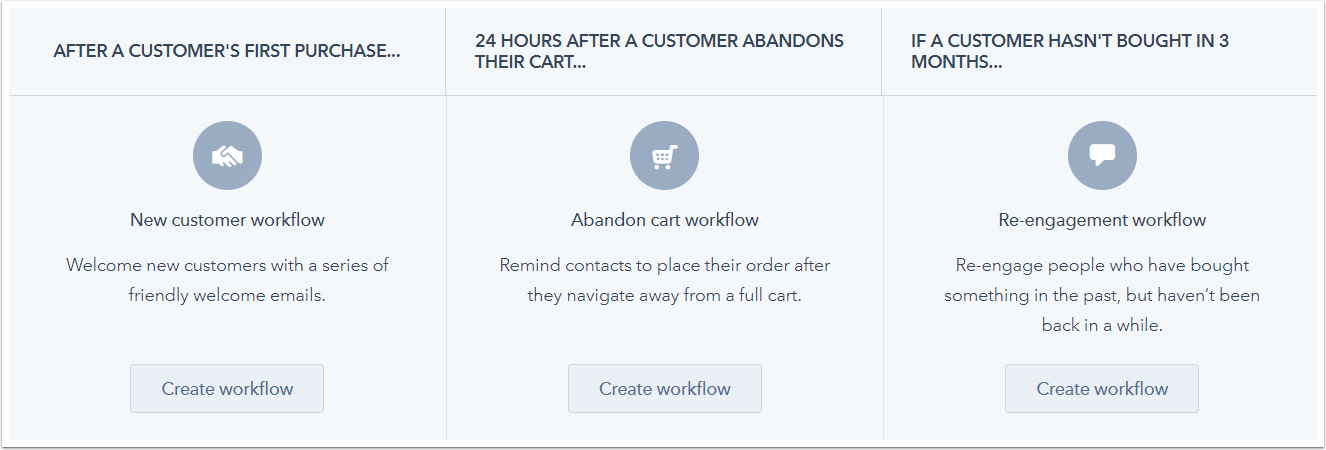
Customer Segmentation for Retargeting
HubSpot CRM allows you to group customers by activity or value — from frequent buyers to inactive accounts — and tailor communication for each segment. Re-engage dormant shoppers with personalized offers or highlight exclusive drops for VIP customers.
Loyalty and Referral Integrations
HubSpot integrates with tools like Yotpo and Smile.io, letting you track rewards, referrals, and repeat purchases inside the CRM. This gives you a unified view of engagement, from first click to loyal advocate.
💡 Example:
Casio, the global electronics brand, used HubSpot CRM to grow its e-commerce customer base by 27% in a single year by unifying data, automating communications, and optimizing follow-ups. (HubSpot Case Study)
Aligning Marketing, Sales, and Support in HubSpot CRM
As e-commerce teams grow, communication often becomes fragmented between marketing, sales, and customer support. HubSpot CRM solves that by giving all departments a shared view of customer data.
- Shared Inbox and Tickets: Support teams can see order history before responding, leading to faster resolutions.
- Customer Feedback Loops: Built-in forms and surveys feed directly into HubSpot, helping teams identify friction points early.
- Collaborative Notes and Tasks: Marketing can check if a customer has an open ticket, ensuring promotions go only to happy, active buyers.
💡 Example:
Wayflyer, a revenue-based financing platform for e-commerce brands, uses HubSpot CRM to align sales, marketing, and service. This unified system ensures customers never repeat information, improving satisfaction and retention. (HubSpot Case Study)
Getting Started with HubSpot CRM
Setting up HubSpot CRM for e-commerce is quick and straightforward:
- Sign Up Free – Try HubSpot CRM for Free →
- Connect Your Store – Integrate Shopify, WooCommerce, or Magento.
- Import Customer Data – Sync purchase history and contact lists.
- Explore Automation Tools – Basic task automation is included in the free plan. To unlock advanced features like cart recovery and post-purchase workflows, you’ll need a Professional or higher plan.
- Track Performance – Use dashboards to monitor revenue, retention, and campaign impact.
Once configured, HubSpot CRM becomes the central command center of your store — where sales, marketing, and support align to serve customers better.
Final Thoughts
E-commerce success isn’t just about increasing traffic — it’s about building systems that turn every visitor into a loyal customer. HubSpot CRM helps you do that by connecting marketing, automation, and customer data into one powerful yet easy-to-use platform.
Disclosure: This article contains affiliate links. We may earn a commission at no extra cost to you if you sign up through our link.



